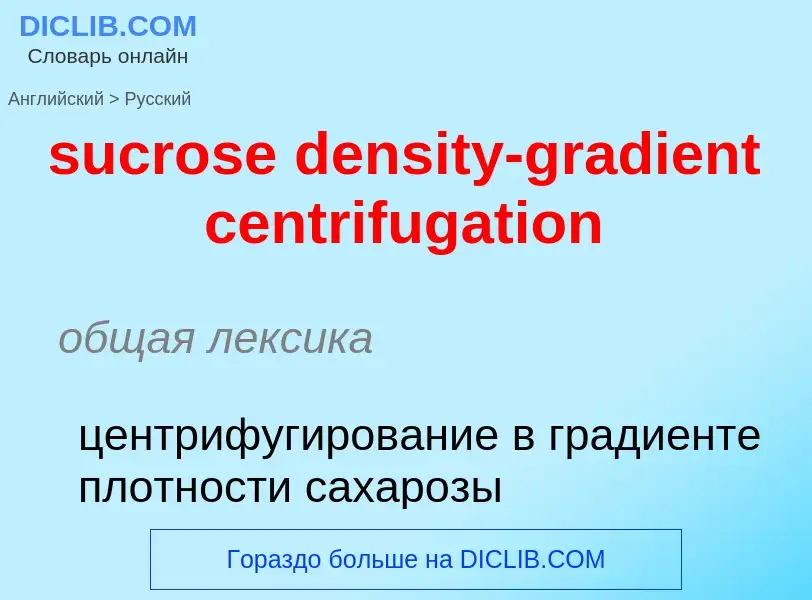Traducción y análisis de palabras por inteligencia artificial ChatGPT
En esta página puede obtener un análisis detallado de una palabra o frase, producido utilizando la mejor tecnología de inteligencia artificial hasta la fecha:
- cómo se usa la palabra
- frecuencia de uso
- se utiliza con más frecuencia en el habla oral o escrita
- opciones de traducción
- ejemplos de uso (varias frases con traducción)
- etimología
sucrose density-gradient centrifugation - traducción al ruso
общая лексика
центрифугирование в градиенте плотности сахарозы
общая лексика
центрифугирование в градиенте концентрации сахарозы
общая лексика
дифференциальное центрифугирование
Definición
Wikipedia

In biochemistry and cell biology, differential centrifugation (also known as differential velocity centrifugation) is a common procedure used to separate organelles and other sub-cellular particles based on their sedimentation rate. Although often applied in biological analysis, differential centrifugation is a general technique also suitable for crude purification of non-living suspended particles (e.g. nanoparticles, colloidal particles, viruses). In a typical case where differential centrifugation is used to analyze cell-biological phenomena (e.g. organelle distribution), a tissue sample is first lysed to break the cell membranes and release the organelles and cytosol. The lysate is then subjected to repeated centrifugations, where particles that sediment sufficiently quickly at a given centrifugal force for a given time form a compact "pellet" at the bottom of the centrifugation tube.
After each centrifugation, the supernatant (non-pelleted solution) is removed from the tube and re-centrifuged at an increased centrifugal force and/or time. Differential centrifugation is suitable for crude separations on the basis of sedimentation rate, but more fine grained purifications may be done on the basis of density through equilibrium density-gradient centrifugation. Thus, the differential centrifugation method is the successive pelleting of particles from the previous supernatant, using increasingly higher centrifugation forces. Cellular organelles separated by differential centrifugation maintain a relatively high degree of normal functioning, as long as they are not subject to denaturing conditions during isolation.


